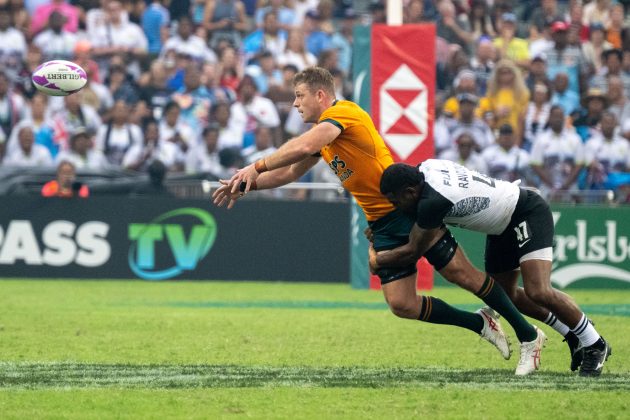If you're new to sevens rugby or haven't watched for a while, here are the trends to look out for
We all remember how we were taught sevens at school – get it to the fastest player out wide, pull out and run backwards if nothing is on, and hope you’ve got a good ‘sweeper’ in behind.
But in 2024, and ahead of the Paris 2024 Olympic Games, we want to explain where the modern game is now.
Related: How to watch the Paris 2024 Olympic Games rugby sevens.
Sevens tactics in 2024
“The traditional way people think of sevens is to avoid contact at all costs, move the ball around, good looking passes and people trying to run round each other,” says former Wales sevens skipper Luke Treharne. “But in the last sort of two to three years physicality is probably the one word I’d use to describe sevens now.
“And it’s all about taking contact on your own terms. It’s not about running around the edge of teams anymore teams are too good at defending.”
How modern sevens teams use the ‘pendulum’
Treharne gives more detail on modern defences, saying: “Traditionally you used to see six defenders in a line with one sweeper, and almost all teams now have seven in a line and it’s called a ‘pendulum’ defence. That’s where the edge players now turn into the last defender, who has to cover the kick.
Related: Seven stars to watch at the Paris 2024 Olympic Games rugby sevens
“So when you are an attacking player on the edge and you’re looking to stand someone up, you’ve actually probably got two and a half players to beat before you can get around someone.

New Zealand men defend (Jayne Russell/Clique Visuals)
“This is where it’s become more physical. Players love to run at shoulders, cut between players. There’s a physical contest over the ruck and whoever wins the contact area these days often wins the scoreboard.”
Argentina men have become the poster boys for this in the last two seasons. They are hapy to play with one-out runners, Treharne says, and then they can unlease Marcos Moneta or Rodrigo Isgró out wide.
New Zealand’s men have long been the masters of attacking the opppositions’ breakdown to turn over ball, while France men have recent;y emerged as a side hellbent on unsettling your breakdown.
Related: Rugby at the Olympic Games
Other defensive trends in sevens
According to Treharne, the chop tackle at the outside defender’s feet is now one of the key weapons in a sevens defence.
As he explains in more detail: “When you get to an edge, teams will look for the second inside – the player one in from the edge (and last player) – to make that chop tackle, so by the time the attacker hits the floor, your edge defender can get straight over the ball (to jackle).
“Most teams now operate with that kind of function. Traditionally, even when it was a six (in the defensive line) and one sweeper, it would always be the edge defender tackles the edge attacker. Now they’re looking for one player in to tackle the edge player and create those turnover opportunities.”

The Blitzboks collect a kick (Jayne Russell/Clique Visuals)
Kicking tactics in sevens now
The use of the pendulum defence means there is seven up in defence.
However, Treharne tells us that kicking today has to be “far more tactical” in the face of that.
As he tells us: “We used to see players kicking for themselves with grubbers. Whereas now you’ll see players kicking for the outside – that’s where the timing comes from, from bringing the defence up and then putting one behind for a team-mate.”
Who do you think will be the masters of sevens tactics at the Olympic Games? Let us know on social media or at rugbyworldletters@futurenet.com
Download the digital edition of Rugby World straight to your tablet or subscribe to the print edition to get the magazine delivered to your door.





